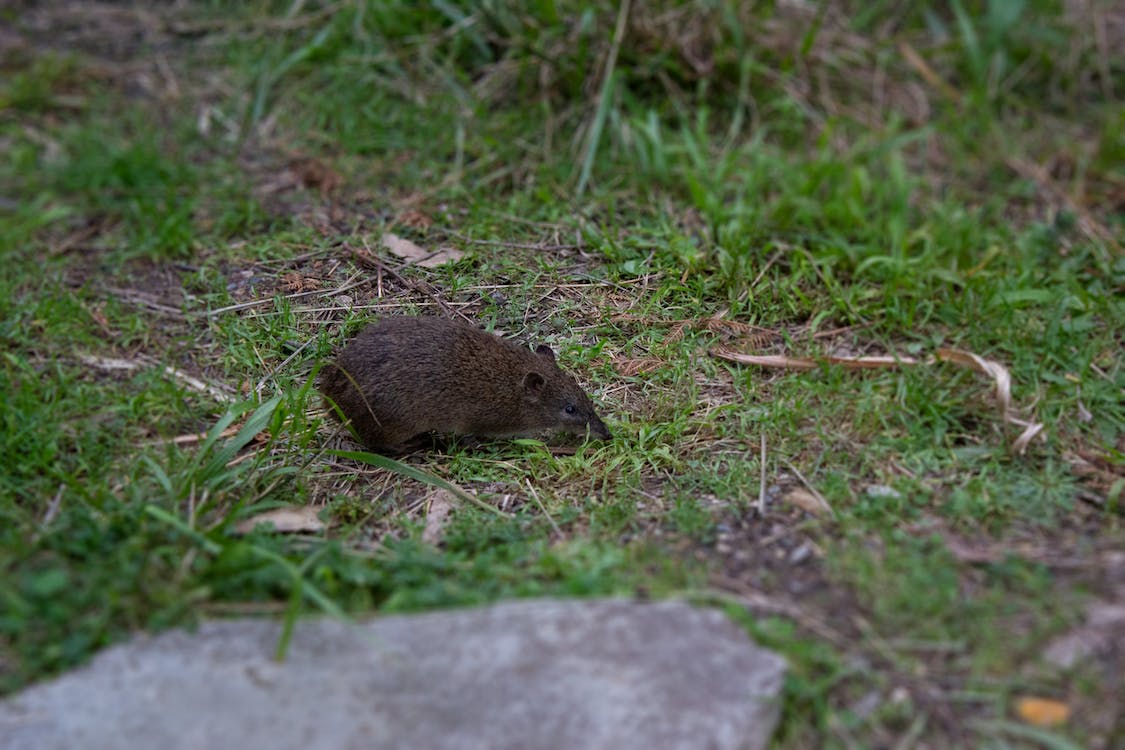10 Fun Facts About Bandicoots |

|
|
Photo by: Tom Materne |
|
Bandicoots are small to medium-sized marsupials found mainly in Australia and New Guinea. With around 20 different species of bandicoots, they are unique and interesting creatures that many people don't know much about. In this article, we'll take a look at ten fun facts about bandicoots that are sure to surprise you. Also, we talked about bandicoots on our podcast. Take a listen. Bandicoots Are Not RatsBandicoots may resemble rats in size and shape, but they are not rodents. They are members of the Peramelemorphia order of marsupials, which also includes bilbies and quokkas. They have a pointed snout, a long tail, and powerful hind legs, making them more closely related to kangaroos and wallabies. Bandicoots Have a Unique Reproductive SystemLike other marsupials, bandicoots have a unique reproductive system. They have a short gestation period of only 12 to 14 days, after which the young are born and continue to develop in their mother's pouch. However, unlike other marsupials, bandicoots have two uteri and can become pregnant again while still carrying a developing embryo in their pouch. Bandicoots Are NocturnalBandicoots are mainly active at night, making it difficult to spot them in the wild. During the day, they sleep in burrows or under vegetation, emerging at dusk to forage for food. This makes them an important part of the ecosystem, as they help to control insect populations. Bandicoots Have Strong Digging AbilitiesBandicoots are excellent diggers, using their strong front paws and sharp claws to excavate burrows in the ground. They create complex tunnel systems with multiple entrances and exits, which provide them with protection from predators and the elements. Bandicoots Have a Varied DietBandicoots are omnivores, feeding on a variety of insects, worms, roots, and tubers. They have a keen sense of smell, which helps them to locate their food in the soil. Some species of bandicoots also eat small vertebrates such as lizards and rodents. Bandicoots Play an Important Ecological RoleBandicoots play an important ecological role in Australia and New Guinea, as they help to control insect populations and disperse seeds. They are also an important prey species for larger animals such as dingoes and snakes. Bandicoots Have a Distinctive Hopping GaitBandicoots have a distinctive hopping gait, similar to that of kangaroos and wallabies. They use their powerful hind legs to propel themselves forward in a series of hops, which helps them to cover ground quickly while foraging for food. Bandicoots Have Excellent Hearing and VisionBandicoots have excellent hearing and vision, which helps them to avoid predators and locate food. They have large, pointed ears and eyes positioned on the sides of their head, which gives them a wide field of vision. Bandicoots Have a Short LifespanBandicoots have a relatively short lifespan, with most species living only 2 to 5 years in the wild. This is due in part to their small size and the fact that they are preyed upon by a variety of animals. Some Species of Bandicoots Are EndangeredUnfortunately, some species of bandicoots are endangered due to habitat loss, predation, and disease. The Northern Brown Bandicoot and the Eastern Barred Bandicoot, for example, are both classified as endangered by the International Union for Conservation of Nature (IUCN). Conservation efforts are underway to help protect these unique and important animals. Wrap-Up: Fun Facts About BandicootsBandicoots are fascinating and unique marsupials that are an important part of the ecosystem in Australia and New Guinea. With their strong digging abilities, keen sense of smell, and distinctive hopping gait, they are well-adapted to their environments. However, some species of bandicoots are endangered, making it important to support conservation efforts to protect these important animals. Fun Facts About Bandicoots FAQsWhat is a bandicoot?A bandicoot is a small to medium-sized marsupial found mainly in Australia and New Guinea. With around 20 different species of bandicoots, they are unique and interesting creatures that are more closely related to kangaroos and wallabies than rats or mice. Are bandicoots dangerous to humans?No, bandicoots are not dangerous to humans. They are shy and mainly active at night, making it difficult to spot them in the wild. While they may defend themselves if cornered or threatened, they are not aggressive towards humans. What do bandicoots eat?Bandicoots are omnivores, feeding on a variety of insects, worms, roots, and tubers. Some species of bandicoots also eat small vertebrates such as lizards and rodents. How long do bandicoots live?Most species of bandicoots have a relatively short lifespan, living only 2 to 5 years in the wild. This is due in part to their small size and the fact that they are preyed upon by a variety of animals. Why are some species of bandicoots endangered?Some species of bandicoots are endangered due to habitat loss, predation, and disease. Conservation efforts are underway to help protect these unique and important animals. |